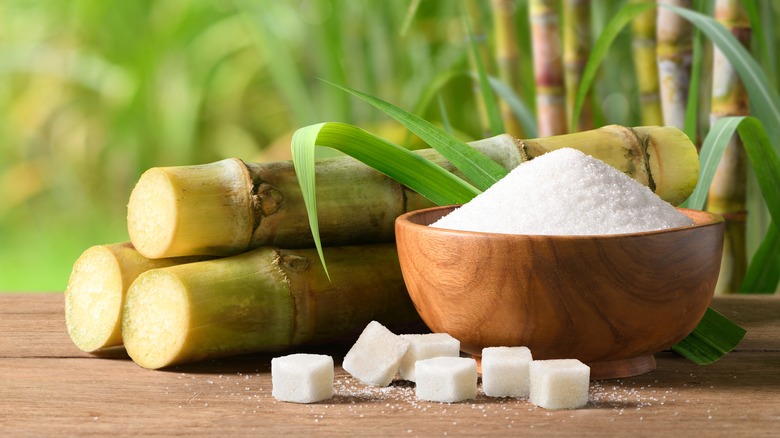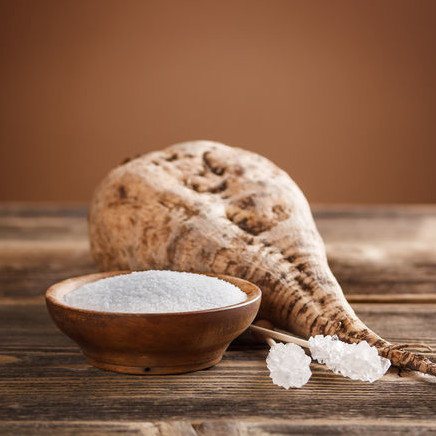The choice between beet sugar vs cane sugar can influence the sweetness level of certain dishes.
The choice between beet sugar vs cane sugar can influence the sweetness level of certain dishes.
Blog Article
Discover the Uses and Conveniences of Beet Sugar Vs Cane Sugar in Your Daily Diet Plan
Exploring the distinctive qualities of beet and cane sugar exposes greater than just their sweetening abilities; it highlights their one-of-a-kind influences on wellness and cookeries. Beet sugar, understood for its subtle flavor, is often preferred in delicate treats, whereas cane sugar, with its tip of molasses, includes richness to robust dishes. Each type holds its own nutritional account and glycemic implications, welcoming a deeper understanding of their functions in a well balanced diet regimen and sustainable intake techniques.
Beginning and Manufacturing Procedures of Beet and Cane Sugar

The unique environments and soil kinds required for growing sugar beets and sugarcane contribute to distinctions in their cultivation techniques and geographic distribution, affecting the economics and sustainability of their production. beet sugar vs cane sugar.
Nutritional Comparison Between Beet Sugar and Cane Sugar
Despite originating from various plants, beet sugar and cane sugar are nutritionally really comparable, both mostly including sucrose. Each provides concerning 4 calories per gram, converting to about 16 calories per tsp. Structurally, both sugars are made up of approximately 99.95% sucrose, with very little amounts of various other compounds like wetness and trace minerals, which do not substantially change their dietary profiles.

Eventually, when choosing between beet sugar and cane sugar based on nutritional web content alone, both offer identical benefits and downsides as they are basically types of the exact same molecule-- sucrose, providing quick energy without various other nutrients.
Influence On Wellness: Glycemic Index and Caloric Content
Discovering further right into the results of beet sugar and cane sugar on health, it is necessary to consider their glycemic index and calorie web content. Both sugars are categorized as sucrose, which includes sugar and fructose. This structure leads them to have a comparable influence on blood glucose levels. The glycemic index (GI) of both beet and cane sugar is around 65, classifying them as high-GI foods, which can cause fast spikes in blood sugar levels. This is an this website important element for people handling diabetes mellitus or those attempting to a knockout post maintain their energy levels throughout the day.
Each kind of sugar consists of around 4 calories per gram, making their calorie material matching. For those monitoring calorie consumption, specifically when managing weight or metabolic wellness conditions, recognizing this equivalence is important (beet sugar vs cane sugar). Extreme consumption of any type of high-calorie, high-GI food can add to health issues such as weight problems, heart disease, and insulin resistance.
Environmental and Economic Factors To Consider of Sugar Production
Beyond wellness impacts, the manufacturing of beet and cane sugar also elevates substantial ecological and economic worries. Sugar beet farming tends to call for cooler environments and has a lower geographical impact compared to sugar cane, which grows in tropical areas.
Furthermore, using chemicals and fertilizers in both beet and cane sugar cultivation can lead to dirt deterioration and air pollution, more impacting biodiversity and local water bodies (beet sugar vs cane sugar). The selection in between cultivating sugar beet or cane commonly depends upon local ecological problems and financial elements, making the sustainability of sugar production a complex concern
Culinary Applications and Flavor Differences
While the environmental and financial facets of sugar manufacturing are indeed considerable, the selection in between beet and cane sugar additionally influences culinary applications and flavor profiles. Beet sugar, obtained from the sugar beet plant, is understood for its remarkably neutral taste. This makes it a functional active ingredient in cooking, where it does not alter the taste of various other elements. It dissolves quickly and is suitable for usage in cakes, cookies, and breads.
Cane sugar, removed from sugarcane, commonly maintains molasses traces, which give a distinct richness and depth. The minor variation in moisture content in between beet and cane sugar can influence the appearance and consistency of dishes, making cane sugar a recommended option for details dishes that site that benefit from its unique buildings.

Final Thought
Finally, both beet and cane sugar have distinctive origins and production processes, using similar nutritional accounts with small differences in sodium web content and taste. While their influence on health, specifically pertaining to glycemic index and calories, is comparable, the selection between them frequently comes down to environmental, financial elements, and specific cooking demands. Understanding these elements can direct customers in making educated decisions that line up with their health and wellness objectives and taste preferences.
Report this page